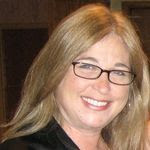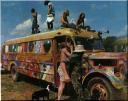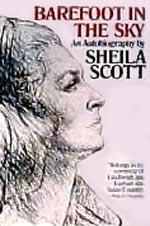Dr. Mark Burgin, a Professor and currently a visiting Scholar at UCLA possesses an incredible insight garnered from his deep understanding of physics, mathematics, logic and philosophy. An eclectic mix, but he hits the nail on the head with his paper on Age of People. As promised, here is the paper in its entirety. References are available by requets. It is a challenging, but thought-provoking read. And for any 50-plusser, the Conclusion is a must-read.
Physics, Biology, Mathematics, Society and Philosophy. Enjoy.
Proceedings of the 26th Annual Conference of Engineering in Medicine and Biology Society, IEEE EMBS, San Francisco, California, 2004, pp. 655-658
Age of People and Aging Problem
M. Burgin
Department of Mathematics, University of California, Los Angeles, Los Angeles, CA 90095, USA
Abstract— To apply technology to problems of age and aging, we need to better understand these problems and to develop operational technique for their solving. Creation of
foundations for such a technique by means of a multifaceted model of age is the main goal of this paper. The suggested approach is based on the system theory of time, multilayer
model of evaluation, and on differentiation of three functional subsystems in the human organism: biological, physiological, and psychological.
Keywords— Age, time, aging, neural network, health
I. INTRODUCTION
The aging problem is very important for society. There are many issues in this problem. One of the most important, which hinders essential advance in the aging problem solution, is a discrepancy between our understanding of the age of a person and the aging problem. The age of an individual A is defined as time that has passed from the birth of A to the present moment. However, the crucial aspect of the problem of aging is not this time but those negative changes in the human organism that go on with passing time. One kind of negative changes is a decline in health.
Thus, the conventional age of a person that is measured as time that has passed from the birth of a person to the present moment does not reflect aging as a process. Even appearance of people that have the same conventional age can be essentially different. We look at two women and suppose that one is 25 years old, while another is 50 years old. Then we find with a surprise that the age of both is the same and equal to 40 years. Another example of inconvenience of the conventional age is given by physical conditions of a person. For instance, one thirty year old man can run 10 miles without big efforts, while for another man
of the same age even to go one mile is a great problem.
There is also a huge variability in health of people of the same age. All this brings us to the conclusion that there is a discrepancy between the conventional determination of the
person’s age and those problems that are related to aging. To overcome these discrepancies, we introduce a new understanding of the age of a human being. Age is considered as a three-component vector that comprises essential characteristics of an individual. This approach is based on the system theory of time [3, 5], in which time in a system is considered as a dynamical characteristic, which can be related to processes going in a subsystem or related to changes of some aspect or feature of this system.
This allows one to decompose time into a multidimensional parameter and to represent age as a three dimensional vector of specific inner times of an individual. We call this model the triadic age as it has three components: biological, physiological, and psychological age.
This approach implies utilization of computers and neural networks. Computers will do numerical and symbolic data processing for age determination. Neural networks are
best at identifying patterns or trends in data [8]. Consequently, they are fit to perform data preprocessing and find parameters for components of age.
In the second section, going after Introduction, we consider some basic concepts and constructions from the system theory of time. The concept of the biological age is
developed in the third section. Conclusion contains some problems related to the concept of health, which is central in medicine, and possibilities to use age characteristics in
biomedical computer-assisted decision support systems.
II. INTRODUCTORY CONCEPTS AND PRINCIPLES OF THE SYSTEM THEORY OF TIME
To reflect properties of different kinds of time, the system theory utilizes principles, which represent the most essential properties. An important peculiarity of the system approach to time is the emphasis that is made on the necessity to consider time not as an absolute essence but to relate time to a definite system.
Principle O1. Any system has its own time. Applied to physical systems, Principle O1 implies that time is different in different coordinate systems and it is necessary to correspond one local time to the other in order to coordinate events in these systems. The special theory of
relativity determines how to do this coordination. Namely, the notion of time relies on clocks, the date of an event being defined by coincidence of this event with a top delivered by a clock located at the same place. In order to be defined in the whole space, time also depends on the exchange of light signals, which are necessary to compare and synchronize the indications of remote clocks. The universal and finite velocity of light propagation then leads to a definition of time simultaneity, which depends on the observer's motion. In this sense, the system theory of time is an extension of the special theory of relativity.
To derive other properties of time from Principle O1, we apply system theory. According to its principles, any system R is not unique. Consequently, there is another system Q,
which is not included in R. In general, we have the following triad interaction R Q (3) Principle O1 implies that R has some time TR, Q has some time TQ, and interaction as a system has some time TRQ. If we consider TR , TQ , and TRQ with respect to R, then we come to the following result.
Theorem 1 [5]. Three types of time exist for an arbitrary system R: an internal, connection, and external time. Here, TR is an internal time for R, TQ is an external time for R, and TRQ is a connection time for R. Definition 3. Internal time TR of R is the time, in which the whole system R or some of its subsystem functions.
Definition 4. External time TeR for R is an internal time of its environment as a system.
Definition 5. Connection time TcR for R is the time in which the processes of interaction of R with its environment go on. Internal, or inner, time TIR is an inherent property of the system R. Several kinds of inner time are connected with such a system as a human being. There is biological time, which is the inner time of an individual when we consider this individual as a biological (living) system [5, 11].
Besides, researchers distinguish physiological time if the organism is considered on the level of biochemical (physiological) process [15, 17]. If we consider a human being as a biochemical system, then such a kind as the biological time is the primary one [15, 17, 18].
Psychological time appears on the level of personality [1, 9, 10, 14], while the behavioral level of an individual is related to perception time, as well as to reaction time [2].
Problems of aging are related to inner time of an individual. The main principle for inner time of system connects the flow of the inner time in a system with changes going on in this system.
Principle OI 1. Time TR in a system R is a property of R in which the scale LT is labeled/indexed set (in particular, a sequence) of changes in R. This corresponds to and develops the traditional approach, in which time is reckoned by noting the intervals
that occur by the motion of material things. Historically, this has meant how many times the sun is at its highest point in the sky (days), the moon at the same phase (month), and the
passing of the seasons (year). In the physical world, recognition of the passage of time is always in relation to something material. Taking the motion of material things as a time indicator, we see that the more uniform the material motion the more accurate we can be in our measurements and divisions of time.
An important problem is the topology of the time scale.
Existence of several inner times in one individual implies that the age of a person is not a unique number, which is equal to the length of physical time from the birth of this person to the given moment. This is only the chronological age, which is not the most important for a human being.
To find more representative temporal characteristics, we consider three subsystems of an individual and find related time, which characterizes the corresponding age of this
individual. As a result, we have three major components of the age of an individual: biological, physiological, and psychological ages. These ages are much more important
than the conventional (chronological) age because the latter is determined by systems external to an individual, while three new characteristics represent inner time more closely
related to aging. Here the main emphasis is on the biological age.
III. BIOLOGICAL AGE
At first, we give an informal definition.
Definition 3.1. Biological age reflects how well the organism of this person is functioning.
To give an exact definition, we use the general theory of evaluation [6] because we need not an abstract formula but a working mechanism for age evaluation. According to this
theory, the first stage in evaluation is to determine criteria for evaluation. However, a criterion can be too general for a direct estimation. This causes necessity to introduce more
specific properties of the evaluated object. Such properties play the role of indices for this criterion. Thus, the second stage of evaluation consists of index selection that reflects
criteria. Sometimes an index can coincide with the corresponding criterion, or a criterion can be one of its indices. However, in many cases, it is impossible to obtain exact values for the chosen indices. For instance, we cannot do measurement with absolute precision. What is possible to do is only to get some estimates of indices. Consequently, the third stage includes obtaining estimates for selected indices. This shows that a complete process of evaluation
has the following structure:
Criterion → Index → Estimate
Definition 3.2. Biological age is an indicator of organism functioning external display, reflects all external changes in the biological system of the individual, and consists of three components.
Components of the biological age: static, reaction (or functional), and processual biological age. Indicators/indices for the static component are parameters of the observable external state of the body parts, such as skin, hair, eyes, etc. Indicators/indices for the reaction component are external reactions of the organism, such as: respiratory response to some physical activity; physical strength;
change of the body temperature as a result of temperature change in the environment; time for restoring normal reactions after hard work; the rate of reaction to some stimulus, etc. Indicators/indices for the processual component are parameters (e.g., time, rate, endurance) of observable external processes, such as running, swimming, writing, reading, sleeping, etc.One way to find the value of a component of biological age is to combine the values of the corresponding indicators in some formula and then to make calculations according to
this formula. Another approach to the biological age component value determination is to use neural networks that learn regularities of this component behavior. Their training data
for these networks consist of age component estimations made by experts. These data supervise learning and teach the network.
To get the biological age of an individual, three components of biological age are integrated together by some formula. For example, let SBA be the static biological age, RBA be the reaction biological age, and PBA be the processual biological age. Then it is possible to compute the biological age BA by the following formula BA = a SBA + b RBA + c PBA,
where a, b, and c are positive real numbers (weights of the components) with a + b + c = 1.
An important question is how biological age is related to biological time. To get a true correspondence in this aspect, we need to consider aspect time and introduce two
kinds of biological time: complete and aging biological time.
Definition 3.3. Complete biological time is time that reflects all external changes in the biological system of an individual.
Definition 3.4. Aging biological time is time that reflects only developmental and degradation external changes in the biological system of an individual.
It is necessary to consider age on several levels of indices. For instance, strength is an index for the biological age. At the same time, there are different levels of strength for different people. The interval for strength is so wide that if we compare different people by their strength, it would be possible to regard one adult individual as a child in comparison with another individual of the same age. Each level of indices is determined by the extent of mental abilities (inherent or developed) of a person.
IV. PHYSIOLOGICAL AGE
At first, we give an informal definition.
Definition 4.1. Physiological age represents how well biochemical reactions are going in the organism of this person.
As in the case of biological age, this brings us to the
following characterization.Definition 4.2. Physiological age is an indicator of internal organism functioning, reflects all internal changes in the physiological system of the individual, and consists of three components. Physiological age also reflects how organism reacts to infection, stress, different kinds of food, air and water pollution etc. With aging, metabolic processes decrease.
Components of the organism functioning age are similar the components of the biological age: static, reaction, and processual physiological age.
Indicators/indices for the static component are parameters of the internal state of parts, such as the blood pressure, oxidative load, pH (acid/alkaline) balance, mineral content of blood, urine and saliva etc. Indicators/indices for the reaction component are internal reactions of the organism, such as change of the heart rate as a result of some physical activity, general
circulatory response to some physical activity, change of the blood pressure as a result of stress or the rate of reaction to some stimulus. Indicators/indices for the processual component are parameters of internal processes, such as digestion, circadian rhythms, endocrine system functioning etc.
An important question is how physiological age is related to physiological time. To get a true correspondence in this aspect, we need to consider aspect time and introduce two kinds of physiological time: complete and aging physiological time.
Definition 4.3. Complete physiological time is time that reflects all internal changes in the biological system of an individual.
Definition 4.4. Aging physiological time is time that reflects only developmental and degradation internal changes in the biological system of an individual. Thus, aging physiological time plays an important role in the definition of health of an individual.
V. PSYCHOLOGICAL AGE
At first, we give an informal definition.
Definition 5.1. Psychological age reflects how the psyche of this person is functioning.
As in the case of biological age, this brings us to the following characterization.
Definition 5.2. Psychological age is an indicator of psyche functioning, reflects all changes in the psyche of the individual, and consists of three components. Components of the organism functioning age are similar the components of the biological age: static, reaction, and
processual psychological age. Indicators/indices for the static component are
parameters of the psyche, such as temperament, intelligence, will etc.
Indicators/indices for the reaction component are psychological reactions of the individual, such as emotional reaction to some irritant or problem solving, decision making and patter recognition estimated by their result. For instance, IQ is an estimate of the problem solving index. Indicators/indices for the processual component are parameters of psychological processes, such as problem solving, decision-making, and pattern recognition.
An important question is how psychological age is related to psychological time. To get a true correspondence in this aspect, we need to consider aspect time and introduce two kinds of psychological time: complete and aging psychological time.
Definition 5.3. Complete psychological time is time that reflects all internal changes in the psyche of an individual.
Definition 5.4. Aging psychological time is time that reflects only developmental and degradation internal changes in the psyche of an individual. Some individuals have extraordinary mental abilities. Consequently, similar to biological age it is necessary to
consider psychological age on several levels of indices. Each level is determined by the extent of mental abilities of a person.
It is necessary to make a distinction between psychological time and subjective perception of time [1, 9, 10, 12]. Psychological time reflects changes in the psyche of an individual, while subjective perception of time indicate individual perception of physical time.
VI. CONCLUSION
It is important to consider the problem of aging in connection with the problem of health. The suggested multicomponent approach to age definition discloses a wider approach to health. In particular, it shows that it is important to discern static, functional, and processual components. According to the conventional definition [13], health is a state of complete physical, mental and social well-being and not merely the absence of disease or infirmity. This Definition has not been amended since 1948. Similar definitions, we can find in different dictionaries and encyclopedias. However, such definitions include only the
static component of health. A more advanced approach takes into account all three components [7]. Such an approach is aimed at preventive medicine, which is not only treating ill patients but also tends to prevent people becoming ill.
We can also see that that a more relevant determination of individual age opens new possibilities for modeling human organism by means of computers, neural networks and grid arrays [4]. Such models might be useful in biomedical computer-assisted decision support systems [8].
References for this article available upon request.
 Fast forward to today's once upon a time. There was a pill. It was called Viagra. It was blue. And there was a new kind of sexual revolution.
Fast forward to today's once upon a time. There was a pill. It was called Viagra. It was blue. And there was a new kind of sexual revolution.
















 She was intensely driven and competitive. Not only did she pioneer these solo flights, she attempted to beat records where they could be beaten, including besting her own times. As well, she was fearless, braving challenges that would have stopped today's pilots. Flying alone, she was tracked by the US Navy, who had strict instructions: "Don't lose Sheila!"
She was intensely driven and competitive. Not only did she pioneer these solo flights, she attempted to beat records where they could be beaten, including besting her own times. As well, she was fearless, braving challenges that would have stopped today's pilots. Flying alone, she was tracked by the US Navy, who had strict instructions: "Don't lose Sheila!"







